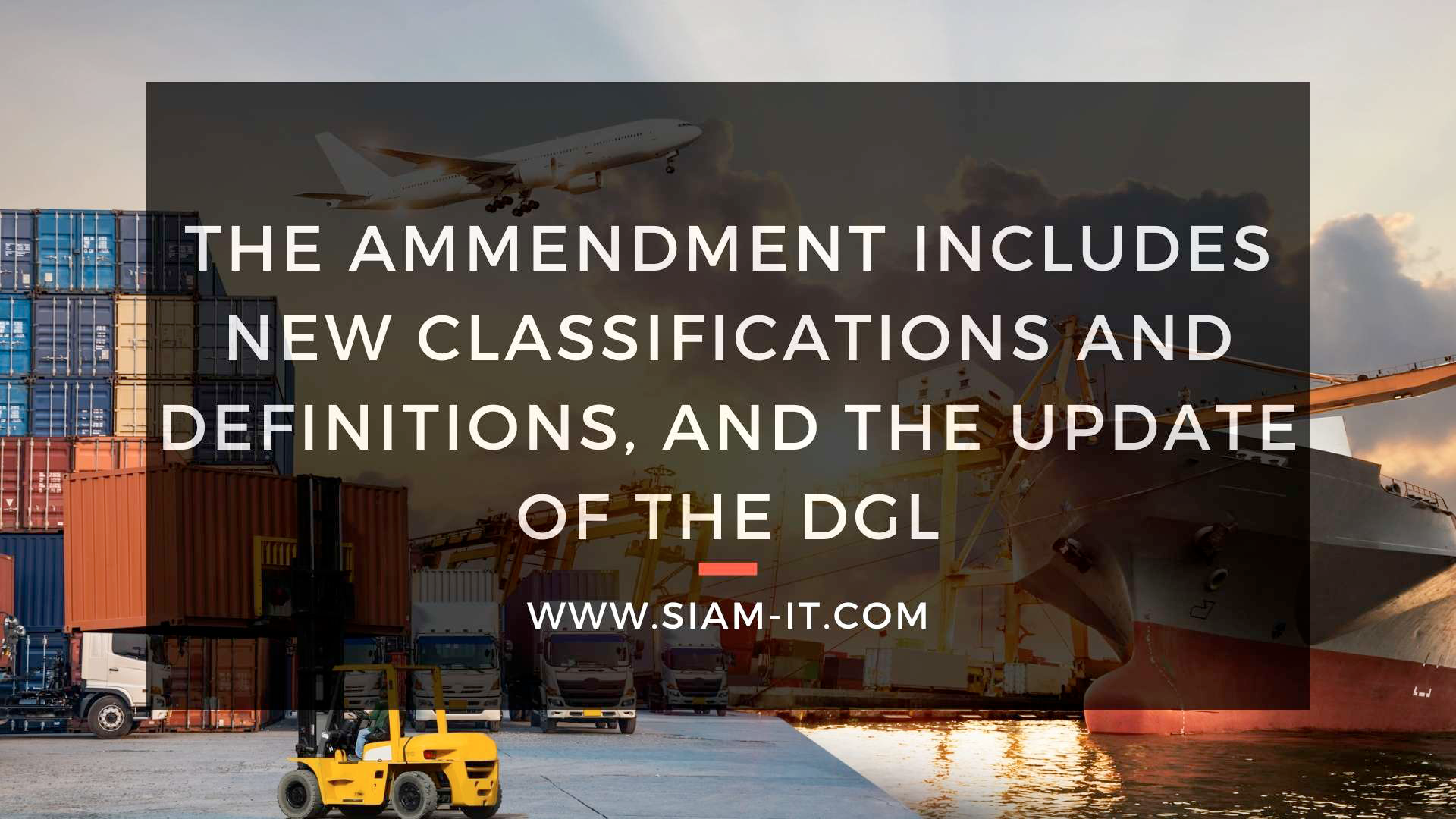
IMDG Code amendment 41-22 comes into force: overview
The maritime industry is witnessing significant changes with the introduction of Amendment 41-22 to the International Maritime Dangerous Goods (IMDG) Code. These amendments, already mandatory from January 1, 2024, present crucial adjustments to improve the safety and regulation of dangerous goods transported by sea.
End of the transitional period
During the 12-month transitional period from January 1, 2023, to December 31, 2023, the previous amendment has remained applicable. It's essential for stakeholders to note this period is over, so, if your company hasn´t do it already, it is the time to adapt your protocols accordingly.
Classification and definitions
Chapter 1.2 witnesses notable changes, introducing new definitions such as IAEA Regulations, inner vessel, pressure receptacle shell, and service equipment. In Part 2 (Classification), technical names for substances and organic peroxides are updated.
In part 2 (classification) new technical names of organic peroxides and self-reactive materials are listed:


Dangerous Goods List (DGL)
New entries and changes in the classification of numerous substances, such as:
- • UN 3550 COBALT DIHYDROXIDE POWDER is a new addition to the DGL under class 6.1.

- • While UN 1169 and UN 1197 are merged, forming UN 1197 EXTRACTS, LIQUID.

- • UN 1891 ETHYL BROMIDE changes class from 6.1 to class 3.

Special Provisions and Packing Instructions
Chapter 3.3 introduces new special provisions, and various notes are added to packing instructions in Chapter 4.1.
The entry introduces new special provisions for transporting large and robust articles with connected gas cylinders containing specific gasses like nitrogen, compressed gas, or compressed air. The provisions include guidelines for securing the cylinders, limiting gas pressure, protecting components, and ensuring proper ventilation for gasses posing asphyxiation risks.
- a) General Note:
- Applies to portable fire extinguishers, even if certain components (e.g., hoses and nozzles) are temporarily detached.
- Safety of pressurized extinguishing agent containers must not be compromised.
- Fire extinguishers must continue to be identified as portable.
- b) New Special Provisions: 396
- Large and robust articles can be transported with connected gas cylinders with open valves.
- Conditions:
- 1. Gas cylinders contain nitrogen (UN 1066), compressed gas (UN 1956), or compressed air (UN 1002).
- 2. Gas cylinders connected through pressure regulators and fixed piping, maintaining gas pressure below 35 kPa (0.35 bar).
- 3. Gas cylinders securely attached to the article with strong and pressure-resistant hoses and pipes.
- 4. Protection of gas cylinders, regulators, piping, and components from damage during transport using wooden crates or suitable means.
- 5. Transport document must include the statement: "Transport in accordance with special provision 396."
- 6. Cargo transport units with articles transported with open-valve cylinders presenting asphyxiation risk must be well-ventilated and marked accordingly (per 5.5.3.6).
- c) New Special Provisions: 397
- Mixtures of nitrogen and oxygen (19.5% to 23.5% oxygen by volume) may be transported.
- No division 5.1 subsidiary hazard label required for concentrations within this limit.
- d) New Special Provisions: 398
- Applies to mixtures of butylenes, 1-butylene, cis-2-butylene, and trans-2-butylene.
- For isobutylene, refer to UN 1055.
Segregation
In line with the deletion of the distinction between 'Strong acids' and 'Acids,' the segregation code 'SG75' is removed in Chapter 7.2.
The amendments align with the UN Recommendations on the Transport of Dangerous Goods, bringing clarity to labeling, definitions, and special provisions. Stakeholders are encouraged to stay informed, referring to the official sources for accurate and up-to-date information.
SOURCES:
https://www.irclass.org/media/6388/technical-circular-no065.pdf
https://www.irclass.org/technical-circulars/amendments-41-22-to-imdg-code/
